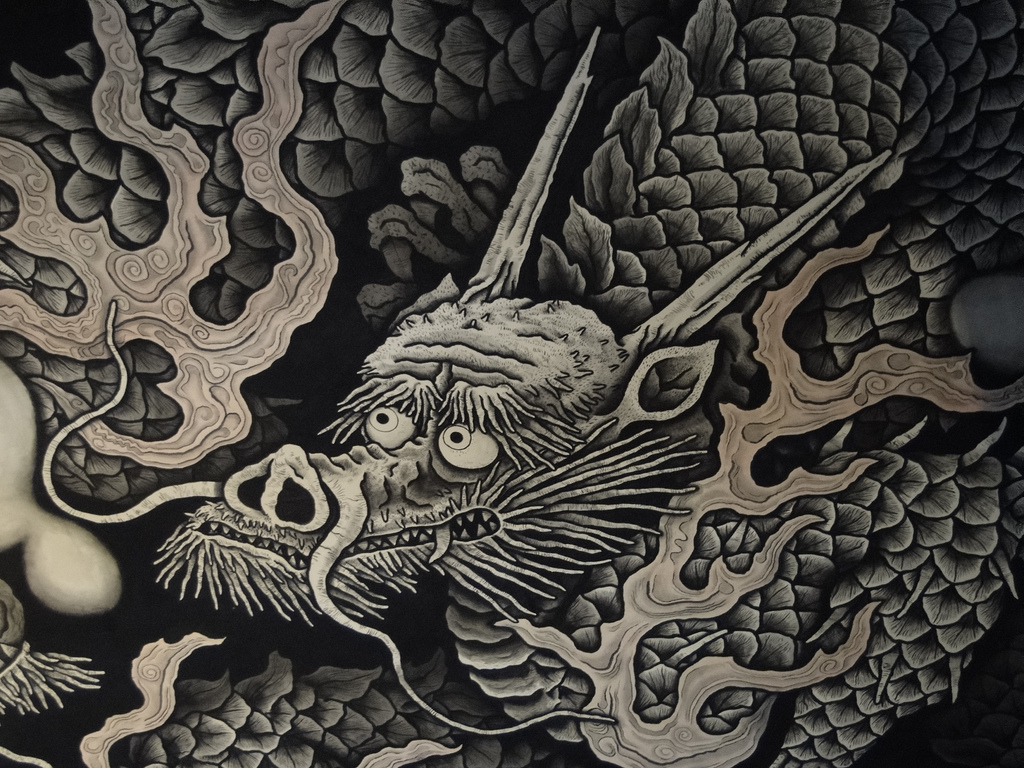That title should really be “Dungeons and Dragons (and Ethics).” Or “D&D, Star Wars, and Cats (with some Buddhism sprinkled in).”
In our first episode for 2016, we wanted to begin a conversation about social ethics — somehow we got sidetracked by Dungeons and Dragons, the classic role playing game that we both grew up with. Seriously, though. Is there a way to reconcile the D&D ethical and moral alignment system with Buddhist ethics? Unsurprisingly, we go off on several tangents before getting to the notion of absolute good and evil that seems implicit in the D&D system and that (some) Buddhist traditions seek to transcend. And we end, of course, talking about cats.
Happy new year!
Image of Tempel Kenninji in Kyoto, Japan copyright: © 2010, Christian Kaden
Licence: Creative Commons BY-NC-ND 4.0
ID: DSC02893
Podcast: Play in new window | Download (Duration: 27:38 — 31.8MB) | Embed
Subscribe: Apple Podcasts | RSS


This was an amazing topic to pick! There’s so much one can say.
First, a preface:
I’ve only played 3.5, 4, and 5 (and Pathfinder). I’ve heard about some of the older rules (like druids must be neutral) but never played with or dealt with them. Next, I’m a Secular Buddhist.
I think (since I know D&D alignments pretty well) that the best approach would be to start with a more firm definition of Buddhist ethics (which you tried to do, but it’s hard – I completely understand).
For me, I’d define it as:
Good minimizes the harm to all living things (first precept), don’t steal, no sexual misconduct, right speech (more than not lying, it includes avoiding harmful speech), and avoiding anything that impedes judgment. You know, the Five Precepts (which can be expanded to more precepts, but I’m just leaving it here for now). Additionally, it would be doing what you can to help all living beings (to leave the world better than you found it).
In general, I think most of these would not be too hard for a (good aligned) character. Don’t steal, no sexual misconduct, right speech (the majority of the time anyways), and no substance abuse. Also helping people is generally how adventuring goes. The only serious problem would be with not causing harm (or killing depending on translation). If you absolutely have to fight in 3.5 – 5th edition, you can choose to have damage dealt as subdue damage (knocking them out instead of killing them). This is a viable option and the party could aim to bring criminals to the authority. Preferably, the party would probably want to focus on using non-violence to avoid fights – trying to understand what pain the enemy is in and to help them so that they stop wanting to hurt others, coming up with compromises, etc. In the case of extra-planar creatures (demons, devils, etc), you technically never kill them unless you kill them on their home plane. (When they hit 0 hit points, they are banished back to their home realm) so that’s not even a big deal per se. In extremely difficult situations, the party might choose to kill because stopping someone from destroying the world will lead to the least harm to the fewest beings – but it would always be a last resort. I think they would often do things like take the doomsday weapon from the villian, but leave the villain to live and escape and fight them again another day.
I also see room for the Bodhisattva perfections – generosity (don’t be greedy for items and such), right effort, patience, loving kindness, equinamity, etc. Indeed, characters could be defined by their lack of fear of death and would benefit from easier access to “resurrection” spells (they could be literal Bodhisattvas in a way).
Also as you note, their intentions when going into a conflict are going to be important as well.
Overall, I agree with your final point that Mahayana Buddhism would be more “neutral” and other Buddhisms would be along the good axis. (For example, think of ideas in Zen Buddhism of acceptable times to kill that other Buddhisms don’t really have).
I think something additional to consider would be that early Forgotten Realms tried to have something “Buddhist-like” in their works on Kara -Tur (the “Asian-like” place). A character named Koja is a “simple lama” who ends up helping a “Mongolian-like” people in their compaign of conquest. He prays to Furo for “annihilation” (it’s really not accurate: http://forgottenrealms.wikia.com/wiki/Furo – but I’m just saying it’s there and they tried). I’ve asked myself before how I would put “Buddhism” into Forgotten Realms. For one thing, there is definitely a soul in Forgotten Realms. I think a lot of the morality would work as above, but you’d have to incorporate the idea of there being a “self” or “soul” in. The “point” of such a Buddhism would not be annihilation (thank you very much, Forgotten Realms) or to get to some permanent heaven, but to live as happily as possible and to as much good as possible. All followers of such a religion would all be Bodhisattvas (they’d go to their own special realm of “afterlife” and then be immediately reborn into the Realms). Nibbana would not be any sort of separate place, but a state of contentment found within Samsara (the Forgotten Realms). I think that many of the devas of other forms of Buddhism could be worked in and that a special class (or set of classes) could be made where you would get attainments (like levitation) at each level – just as in traditional schemes.
Anyways, yeah, I think Buddhism (depending on the specific type) can be classified into D&D’s alignment system (which actually got simplified a little in 4th and 5th edition). It’s more a question of how would such characters interact with the situations of a typical game and would a DM deal with the afterlife concept intrinsic in all versions. (Perhaps by focusing on ideas like the Tibetan bardo?)
These are just my thoughts. Thanks for this episode. Amazing food for thought. (PS – I’ve considered playing a Buddhist character, but haven’t had the chance yet. I”m sure I’ll have more ideas if I ever sit down and make one)